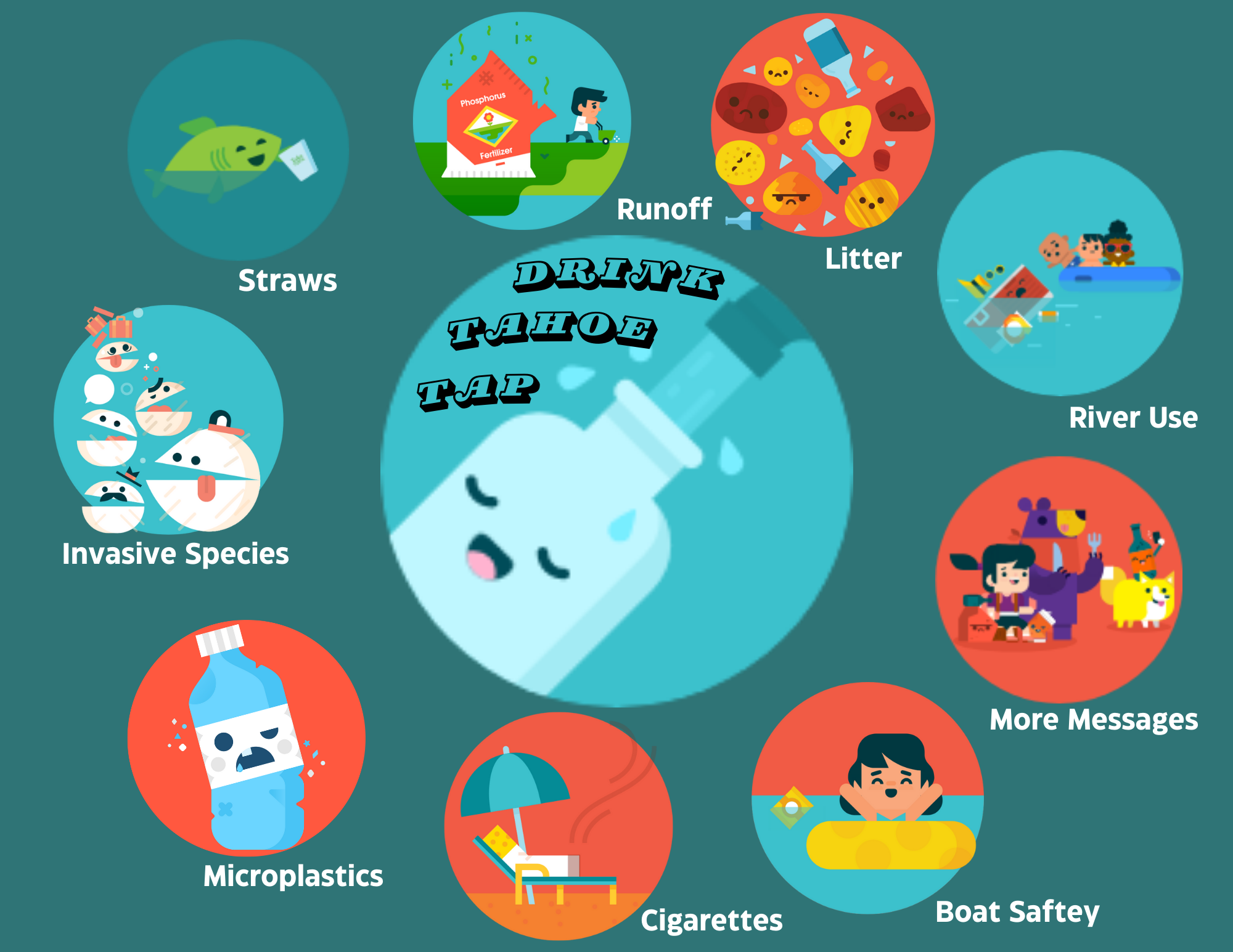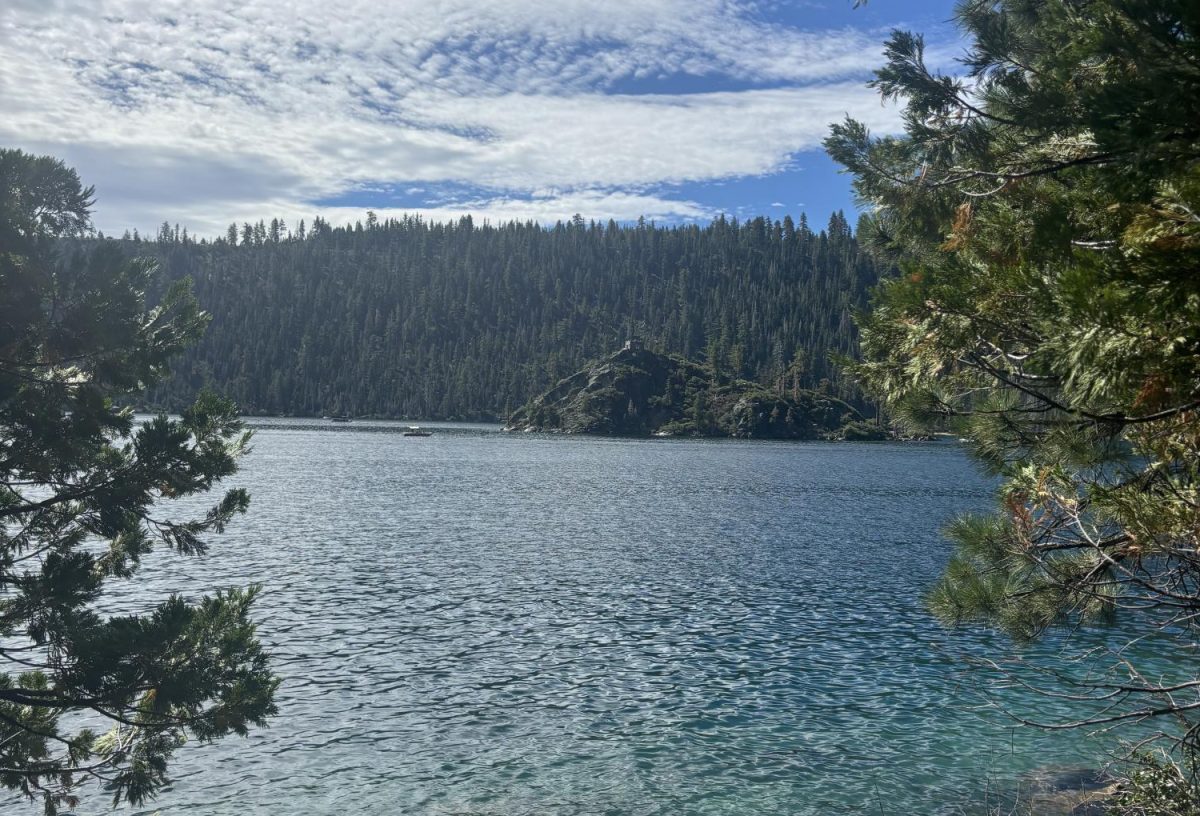Lake Tahoe has some of the purest water on Earth. Located at 6,200 feet above sea level in the Sierra Nevada mountains, the lake is not only a hot tourist attraction with a beautiful setting of snow-capped mountains, lush forests, and sparkling clear water, but it also serves as the precious drinking water source for the surrounding communities and the bustling metropolis of Reno, Nevada.
Lake Tahoe is America’s largest Alpine lake, a high-altitude lake in a mountain area. Formed two million years ago as a result of seismic activity, it is the second deepest lake in North America, sixth largest lake in the U.S after the five Great Lakes, and fifth clearest lake in the world.
With 99.994% pure water, some residents say you can drink from the lake itself. Distilled water is 99.998% pure, so Lake Tahoe’s water is some of the safest drinking water in the world.
“Lake Tahoe’s drinking water is among the best in the world, thanks to its pristine source and minimal state-of-the-art treatment. By choosing tap water over bottled water, visitors can enjoy high-quality hydration while also contributing to environmental conservation efforts.” says Tahoe Signature Properties.
Along with clean water comes the crystal clear perception of the water. Most photos of Lake Tahoe show its glasslike surface of water shining in the sun. “Lake Tahoe’s clarity is the result of a unique combination of natural and human factors. The lake’s oligotrophic nature, high elevation, natural filtering process, thermal stratification, and conservation efforts have all contributed to its crystal-clear water.” states Boat Tahoe.
Though Lake Tahoe has incredibly clean water, part of its purity is the task of protecting the lake and conserving the water. Local water providers such as the North Tahoe Public Utility District (NTPUD) set goals to save and keep water clean in the area. The NTPUD has water-saving rebate programs, where things like smart irrigation systems, free conservation supplies and water-saving appliance rebates are provided to the District’s customers to promote the safe and effective conservation of water.
The State of California Water Conservation Act of 2009 required State water agencies to reduce water consumption 20% by 2020. On May 13 of 2021, the NTPUD was able to successfully announce they had achieved the 20% water conservation goal. 
Water use restriction measures are a part of NTPUD’s mission to save clean water. Some include outdoor irrigation schedules, which restrict outdoor watering to odd or even days of the week. Repairing leaks immediately, reducing the amount of indoor water use, and providing water conservation supplies like hose nozzles, timers, leak detection tabs, and low shower heads to citizens in the community.
“Our dedicated team of professionals works hard to ensure that our water meets or exceeds all state and federal safety standards. We use state-of-the-art filtration systems and regularly test and monitor our water to ensure its quality and taste.” says Justin Broglio of the NTPUD team.
Providing and fostering a culture of water conservation throughout the North Lake Tahoe community is one of the main goals of NTPUD’s water conservation program.
Another aspect of keeping Lake Tahoe safe and clean is protecting the environment from human made pollutants such as microplastics and litter. Microplastics, trash, sediments, nutrients, oil, gas, and bacteria are all things that affect the water quality of Lake Tahoe. Unfortunately, much of the trash surrounding the lake comes from the high tourism levels and heavy use of the recreation areas around the lake.
However, visitors of Lake Tahoe now will most often see signs requesting them to keep the lake clean on beaches, parking lots, and other lakeside areas. The choice of what they do with their trash is up to them, but protecting the environment of the lake is crucial for the safekeeping of residents and the water.
Julie Reagan, Executive Director of the Tahoe Regional Planning Agency says, “Microplastics and other emerging issues have been on our radar for several years and we’re fortunate to have some of the world’s greatest scientists studying our lake and helping protect it. We hope these findings continue the long tradition of relying on science to guide policy and restoration programs to protect Lake Tahoe for generations to come.”
Conserving Lake Tahoe’s water and environment is a number one priority among communities in the region. From the public utility districts to scientists and researchers, the purity of water for human health and preserving Lake Tahoe’s crystal blue water for future generations is mission critical.


